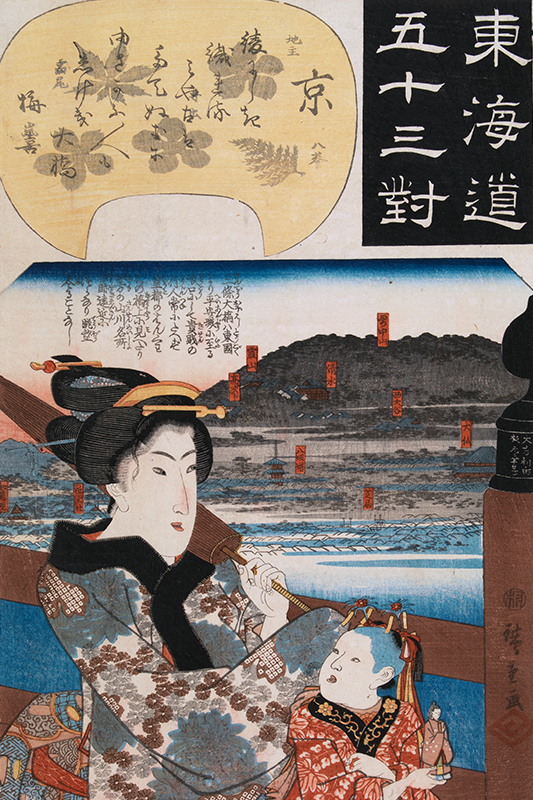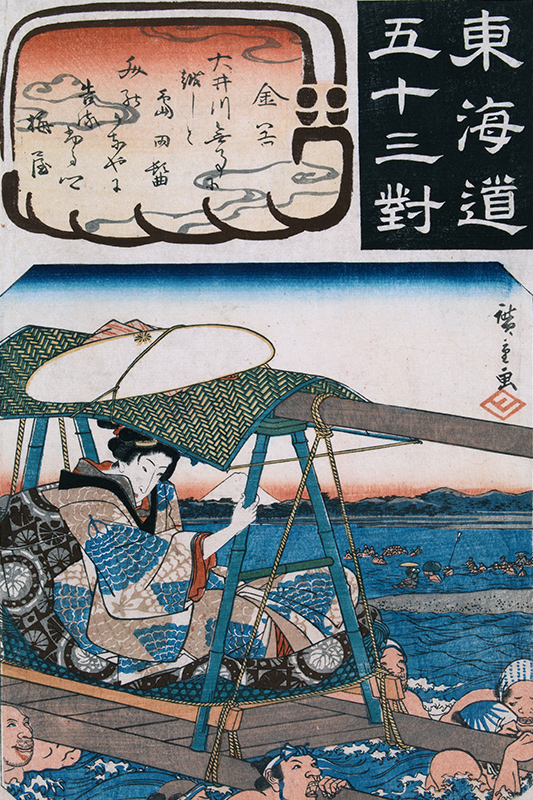Japan
One of the most famous series that can now be found in the Founder’s Collection is entitled ‘Fifty-three Stations of the Tokaido’. Composed of 55 engravings by Hiroshige (1797–1858), Kunisada (1786–1865) and Kuniyoshi (1797–1861), the series dates back to the mid-19th century and depicts a variety of stories and legends linked to the stations on the Tokaido road in Japan.
Tokaido (which may be translated as ‘the Eastern sea road’, a name derived from its coastal location) was one of the main Japanese routes in the Edo period (1603–1868), linking Kyoto, the former imperial capital of Japan, and Edo (now Tokyo). The route passed through several provinces and travellers were required to present permits in order to continue their journey.
The busy, laborious road stretched over 500 km and was traversed on foot by poorer members of the population; wealthier travellers sometimes followed by kago, a kind of sedan chair carried by two men. Along the route were 53 stations (excluding the first and the last) where everyone from feudal lords to peasants and merchants could stay. The journey was long and arduous, especially during harsh winters, but it passed through beautiful landscapes, which are immortalised by the great masters of Japanese printmaking.




Tokaido has been hugely popular in art and literature, appearing in a number of novels and tourist guides. More recently, it has been adopted as a theme by contemporary artists, as well as providing inspiration for board games and video games.
The engravings acquired by Calouste Gulbenkian depict famous landmarks in Japan, such as Mount Fuji and Lake Biwa. The Nihonbashi station depicted in the first print marks the starting point of the Nihon bridge in Edo, while the final print shows the station in Kyoto.
Collection of Stories
Where have the artworks been, before being acquired by Calouste Gulbenkian? Who were their authors and their protagonists? What curiosities do they hide? In this series, discover the various stories behind the Museum's collection.

